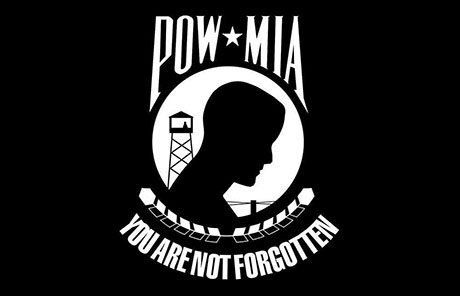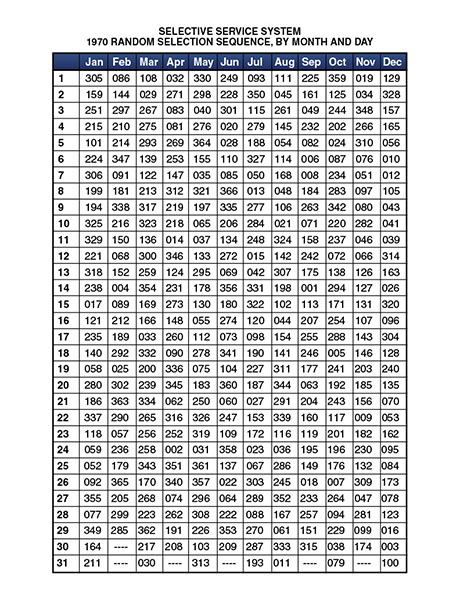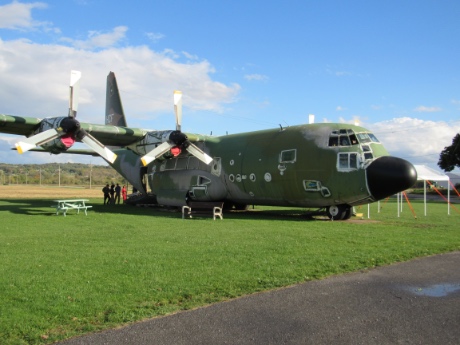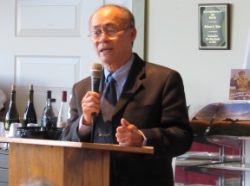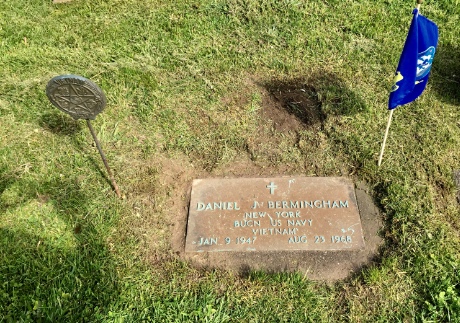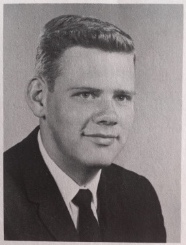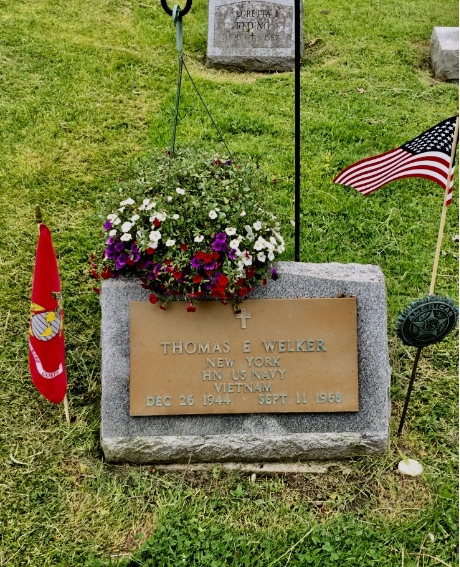A Darien man’s love of aircraft and dedication to aviation history has placed him in the center of a restoration project at the National Warplane Museum in Geneseo.
Mike Foss grew up on a farm near Darien, where at the age of 5 he used to stand outside and wave to the C-130s when they flew over. When the pilots spotted the boy, they would dip their wings to him.
As he grew up, the C-130 became his favorite airplane. Last year at an aviation event, he actually met one of those pilots who dipped his wings at the little boy.
But his mission now, after joining the National Warplane Museum several years ago, is to be actively involved in the restoration of an historic C-130A Hercules, which has been awarded to the warplane museum by the Smithsonian National Air and Space Museum in Washington, D.C.
“I love C-130s,” Foss said. “They are an incredible plane, and to think (that) this (type of plane) is still flying is incredible.”
Initially, there were only three people working on restoration of the plane, because of the COVID-19 pandemic. But in June others were brought on board and now the crew has seven members, Foss said.
The plane will be revamped to showcase museum pieces; it will never fly again, according to Foss.
'Saigon Lady' Restoration to be Centerpiece of Geneseo's Vietnam War Memorial
The plane will be the centerpiece of a Vietnam Veterans Memorial being developed at the Warplane Museum, with guidance from Barry Culhane, of Rochester. Culhane was also instrumental in construction of a Vietnam Veterans Memorial in Rochester, which honors Vietnam veterans from all of Western New York, including Genesee County.
The museum’s recently acquired C-130, nicknamed “Saigon Lady,” will help the Warplane Museum tell the stories of veterans who served in Vietnam during the war and the Southeast Asian Americans who built a new life for their families in America.
This memorial will be one of the first of its kind in the United States, according to information from the National Warplane Museum.
“Saigon Lady” has a unique history. It was the last military cargo plane to fly out of Saigon on April 3, 1975, before the city fell to the North Vietnamese. Its pilot, Lt. Pham Quang Khiem, was able to fly his family of 10, along with more than 50 refugees, to Singapore and eventual freedom for them in the United States.
On Wednesday afternoon, Khiem and his family, who now live in Ohio, visited the National Warplane Museum, where a special ceremony took place.
Meeting the Artist Who Painted 'Saigon Lady' Portrait
Khiem got to meet the artist who painted a portrait named "Saigon Lady," Carol Culhane, of Albion. Culhane, whose husband, Gerald, is a Vietnam veteran, has dedicated much of her work to veterans. She also did artwork for Barry Culhane and the Vietnam Veterans Memorial in Rochester.
She is well-known throughout the Batavia area for her paintings done for Ducks Unlimited members, including the late John O’Brien. Most of O’Brien’s vehicles were adorned with scenes of ducks and dogs painted by Culhane. She also donated her talent for a mural at Justice for Children in Batavia. She is planning to do a portrait of Khiem for his family as well.
Wednesday’s ceremony included an introduction by the Warplane Museum’s volunteer Larry Jones, and museum founder Austin Wadsworth.
Jones told the small crowd, “If you like history and if you like airplanes, this is the place to be.”
What makes Saigon Lady so remarkable is the story behind it, Jones said.
Remarkable Story of an Iconic Aircraft
“This plane is an icon from 1972 – 1975 in Vietnam,” he said. “It is a story of defense and courage and the vision of the museum’s Don Wilson and Ray Ingram who learned the Smithsonian was about to release some of its aircraft, and set to work to acquire this plane.
The C-130 Saigon Lady was, until recently, part of the Smithsonian’s collection.
On Wednesday, Lt. Khiem told the story in his own words.
First, history of the C-130 provided by the Warplane Museum states the "Hercs," as they were known, were a valuable asset to the Vietnamese Air Force. The Lockheed-made aircraft were the largest and heaviest load-carrying aircraft in the VNAF inventory.
As the enemy advanced southward, the C-130s were used in the evacuation of northern cities. At 11 p.m. on the night before Da Nang fell to the enemy, Khiem and his squadron flew one of the last resupply missions into the city.
“As soon as we landed and taxied to the ramp, an Army Republic of Vietnam major jumped into the aircraft to assure himself of a seat. I knew that thousands of people in the terminal would rush the airplane after seeing this, so I kicked him off.
"As it was, the ramp was filled with refugees almost immediately anyway. I shouted to them to let me offload my 20,000 pounds of cargo and then I could take about 200 of them. As soon as the cargo was off the plane, people rushed on and we couldn’t stop them.
Overloaded Plane Bound for Freedom
“The loadmaster called on the intercom and said he could not close the ramp because of the people on it,” Khiem said. “I told him to hang on, then hit the brakes. That jammed them in tight enough to allow him to close the ramp. I had to jump on the brakes three times.
"As soon as we got to cruising altitude, I got out of my seat to take a look back in the cabin. There were people hanging on the paratroop static line cables and no one was sitting down. When we offloaded at Tan Son Nhut, we did an actual head count of 350 people.”
The aircraft was designed to carry 90 people. (Some sources say when maximized, it can accommodate up to 128 people.)
“The flight and panic I saw in Da Nang got me to thinking it looks like the same thing is going to happen in Saigon. I will have to take a C-130 and get my family out.”
Khiem is quick to explain he did not intend to “steal” an aircraft, just borrow it.
Some of the C-130s flew bombing missions to destroy aircraft left behind. The C-130s were loaded with 55-gallon drums of gasoline or napalm and then dropped on VNAF aircraft abandoned on the ramps.
On April 2, 1975, Khiem hitched a ride into Phan Rang on a C-130, hoping to locate his younger brother, who was an airman in the headquarters there. He had hoped to take him back to Saigon to be with the rest of family, but Khiem could not locate him.
“We were lucky though,” Khiem said. “He showed up at my parents’ home in Saigon five minutes before our escape. On the flight back to Saigon, I thought to myself, ‘If Phan Rang is lost, it won’t be long before the Communists are in Saigon.’ It was time to plan my escape.”
There was a lot of talk among other pilots of stealing a C-130 and getting their families out. But Khiem never said a word about it to anyone in his squadron.
“Headquarters must have considered the possibility of that happening, though, because they ordered the airplanes to be fueled with only enough gas to accomplish their missions. If you were going to Phan Rang, they gave you just enough gas, plus a small reserve, to get there. You would have to refuel there in order to get back to Saigon.”
Khiem realized a problem would be finding someone to help him escape.
A Little Help from Friends
“One of my best friends, Major Nguyen Huu Canh, was in the VNAF in our sister squadron. We had been friends a long time and we discussed the possibility of getting out. I knew once a pilot managed to steal an airplane and escape, the VNAF would tighten security, making further escapes impossible. I told my friend if we are not number one to escape, there will never be number two.”
The Major’s family was in DaLat and he wanted to get them to Saigon. But on April 2, DaLat was overrun by the communists and he lost contact with them. After that, he was willing to go along with anything Khiem planned.
“On April 3, all the C-130s were used on bombing missions. I was number one standby on the mission, but I needed time to tell my family what I had planned. I went to the Squadron Operations officer and told him I didn’t feel good, so he agreed to drop me to the bottom of the list.
"That gave me a chance to run home for lunch. I took my brother aside and told him what I had planned. I asked him to take charge of the family and keep them close to home.
“If they heard from me, they were to go immediately to the Long Thanh Airport, which was about 17 miles southeast of Saigon. Long Thanh was a former U.S. Army airbase, on which I had landed several times during training. It had been closed since the U.S. withdrawal in 1973 and was deserted.
Leaving Immediately with Luck on Our Side
“When I got back to the airport, I waited for something to happen. At 3 o’clock, my friend Major Canh called to say he had been assigned to a food resupply mission to Phan Rang. Actually, another pilot had been assigned to the mission, but he complained he had already flown two missions that day and was tired, so my friend volunteered to take his place. I ran home and told my family to leave for Long Thanh immediately.
“But we had another problem. Since we were in different squadrons, we would not ordinarily fly together. In fact, I could not even get into his squadron area.
“Once again we were lucky. The airplane he was supposed to take had mechanical problems and his squadron borrowed one of our airplanes – Hercules CF 460 (Saigon Lady). I met him at the airplane. Now the problem was getting rid of his copilot.
"We told him that I would be glad to take his place in order to fly with my friend, and to look for my missing brother. He was only too happy to take the rest of the day off, especially since he had a date. I warned him not to go back to the squadron since they might not like our switching places without authorization.
“These missions had become so routine that we could take off within minutes, and that created another problem for my plan. The 17 miles to Long Thanh was on a rough country road and I knew my family could not get there before 4 p.m. I also knew once we took off, timing would be essential.
"We couldn’t land at Long Thanh and wait around for them to show up. A C-130 landing on an abandoned airstrip would raise an alarm, and the rest of the crew would know right away what we were doing.
“I had to delay takeoff somehow, so I made sure I got to the airplane before the flight engineer. I pulled several circuit breakers that would not normally pop by themselves, and I knew they would be hard to spot. The flight engineer finally spotted the popped breakers and we cranked the engines at 3:30.
"I am sure the crew was wondering what had gotten into the pilot, since each checklist was read and reread thoroughly. I delayed as long as I could, but we were still rolling before 4 p.m.
One Shot at Escape
“In all my calculation about where we would go, the problem of fuel had always been on my mind. I did not think we would have more than an hour and a half of fuel on board, which would have only been enough to get us to Thailand, and that was not far enough to ensure our safety. But getting this airplane was an opportunity we could not pass up, no matter what the outcome.
“The first thing I did when I got out to the airplane was flip the master switch on to check the fuel level. My heart leapt into my throat when I saw the tanks were full. The line crewman must have anticipated my surprise, because he apologized, explaining he had taken a smoke break while fueling the airplane and forgot about the new rule regarding rationing.
"He begged me not to turn him in. Of course, I gave him a stern look and told him not to ever let it happen again, and then told him to forget about it. With a full load of fuel, we could fly all the way to Singapore. My friend was still despondent about the loss of his family, but he didn’t care where we went as long as it was out of the country.
“Right after takeoff, I turned off all the radios and the transponder. Then I turned on the intercom and said, ‘What’s the matter with them anyway? Why are they sending us to Long Thanh to pick up those people.’ Now the crew knew we were going to Long Thanh, but they thought we had been sent there by headquarters.
"I told my friend we had to slow down, saying if we fly slow, maybe they will think it is a helicopter on their radar screen. As we began to circle the airport, I looked down and tried to spot my family.
“The place was deserted and I got a sinking feeling. The next time around, I searched the country road for them and there they were. Five little cars about a half mile from the airport. I knew my brother had briefed the family to run onto the airport as soon as they saw the ramp come down.
"When the ramp was open, I asked the loadmaster to offload the cargo, which was 20,000 pounds of dry rice. So far they didn’t suspect anything, but I knew I couldn’t take them out of the country without letting them know what I was doing.
“As soon as my family was on board, I said, ‘Gentlemen, I have to tell you that this aircraft will not go back to Saigon any more. We are leaving the country. Anyone who does not want to go is free to leave now.’
Skimming Waves, Singapore Bound
"The flight engineer unhooked his seatbelt and headset and got halfway out of his seat, then sat back down and said he would go with us. The number one loadmaster, who was a 10-year VNAF veteran, must have thought we were defecting to the North Vietnamese, because he got off as quickly as he could.
“Once we were off, we headed out to sea at tree-top level. As soon as we got over the sea, we dropped down to 50 feet above sea level so we wouldn’t be picked up on radar. I mean, we were low. After an hour of skimming the wave tops, I realized we were over international waters and we climbed to 16,000 feet and set a course directly for Singapore."
They landed at 7 p.m. – 56 refugees from the war -- and announced they were “illegal” and wanted asylum. The airport had closed at 5 p.m. and the person who dealt with such people couldn’t be found. Finally at about 1 a.m. 20 trucks filled with police surrounded the airplane and Khiem and his passengers surrendered, explaining they would like political asylum in Singapore.
No one knew what to do with them, so Khiem suggested the airport give them charts and fuel to fly to Australia and they would leave. That seemed like a good idea to airport personnel, until the matter of paying for the fuel came up. They would only accept U.S. currency, and the passengers only had about $400 of the $5,000 needed.
“Fortunately, they were sympathetic,” Khiem said. “They must have had an idea how the war would end. They billeted us in what was like a jail, l and then treated us as heroes. We were there 19 days, then a bus came and took us to a resort island. We had beds to sleep in, not the floor any more.
"The next day we were flown to Guam. We were on our way to a new life in the United States.”
Khiem had managed to get his entire family out, with the exception of his youngest brother, who was in the Army. After the Communists took over, he was sent to a re-education camp for two years of brainwashing. In September 1991, just three months before their father passed away, Khiem’s brother and his family were reunited with the rest of the family, after 16 years apart.
Love for America, Making a New Life
Khiem’s love for America had begun when he attended the language school at Lackland Air Force Base, Texas, in November 1969 as a Vietnamese Air Force cadet. He received his basic pilot training at Randolph Air Force Base, then moved on to Keesler Air Force Base. Eventually, he was assigned to fly transport aircraft and was pilot in command of C-123K aircraft, before moving up to the C-130.
His family of 10 included five brothers, all of them in the military during the war. Three of his brothers were in the VNAF and his oldest brother was the chief training officer for the 62nd wing of the VNAF at Nha Trang. It was a family that believed in their country and was willing to fight to save it – almost to the bitter end.
“What I’ve dreamed for the last 45 years is thanking the U.S. for accepting my family,” Khiem said.
The next day after he and his family were taken out of Singapore, the USAF claimed the C-130 and flew it to South Korea. It was flown there for several years, then flown to the United States to be used by the Coast Guard. It’s final flight was to the museum at Dulles.
When it was released to the National Warplane Museum, a crew disassembled it and transported the wings and fuselage by truck to Geneseo, where it has been reassembled.
After settling his family in America, Captain Khiem began flying for American Airlines, and retired about seven years ago from U.S. Air. He is rated to fly the Boeing 727-100/200, 737-200/300/400 and AirBus 319/320/321.
His friend Major Nguyen Huu Canh is presently flying for an oil-drilling company in Houston.
Khiem has been to the National Warplane Museum several times during the past year to see his C-130. He is eagerly supporting their mission to restore his plane, physically and financially, Warplane Museum founder Wadsworth said.
Photos courtesy of Virgnia Kropf.
Below: Pham Quang Khiem (with baseball cap on at left) and his family pose with the C-130 he “borrowed” and flew his family to freedom just before the Communists invaded Saigon. The plane will be the centerpiece of a Vietnam Veterans Memorial at the National Warplane Museum in Geneseo, which recently acquired it from the Smithsonian.
Below: Carol Culhane, an acclaimed artist from Albion, poses with Pham Quang Khiem and the picture she painted entitled "Saigon Lady," which will accompany the historic airplane that is to be completely restored.


